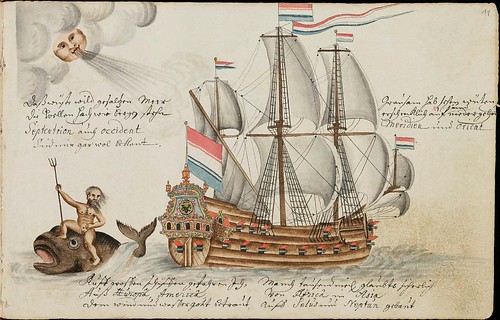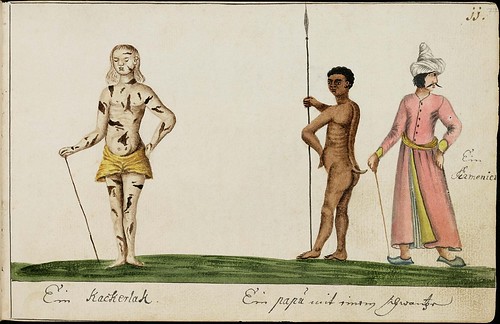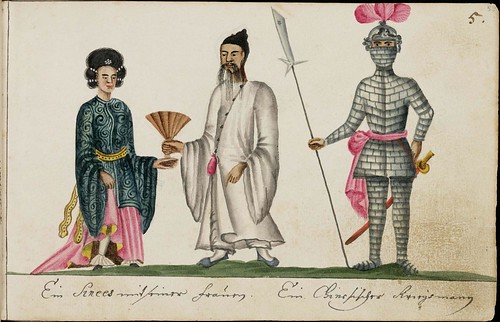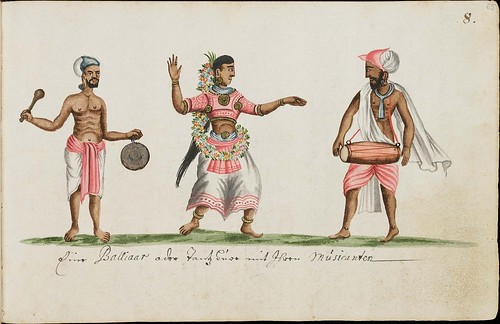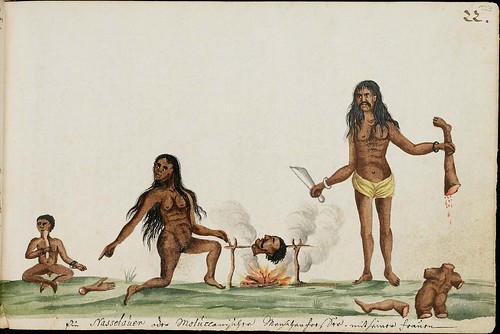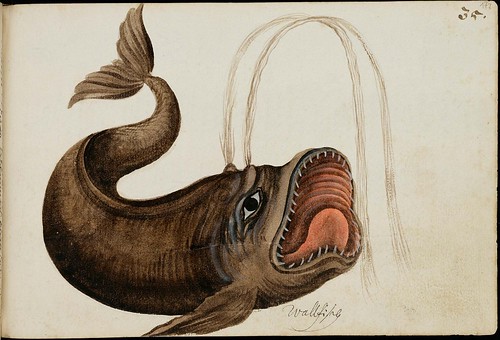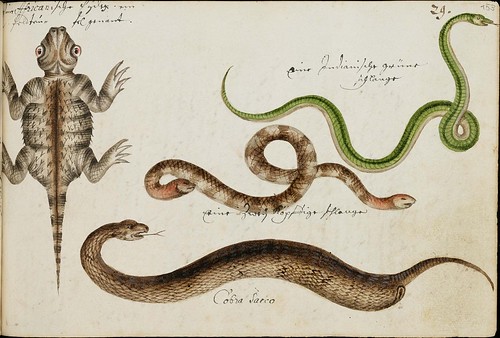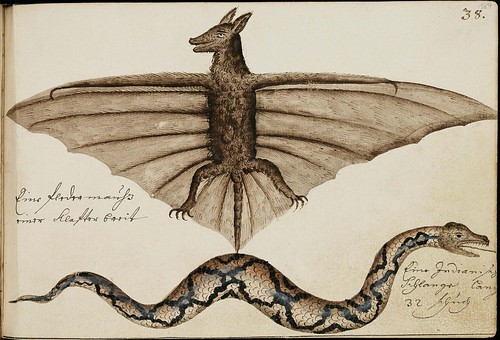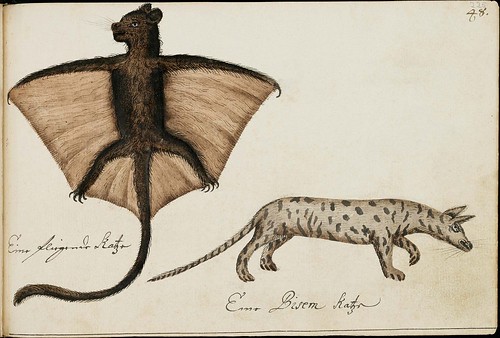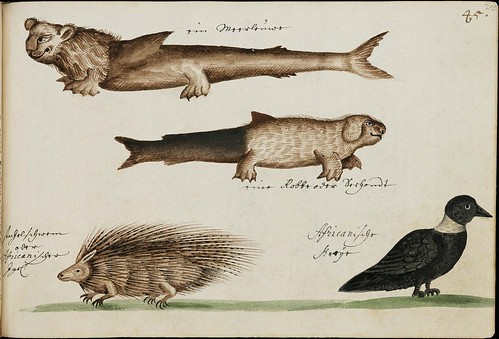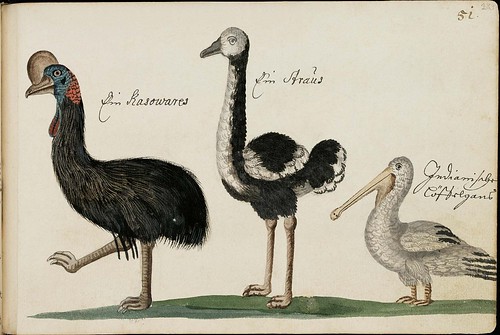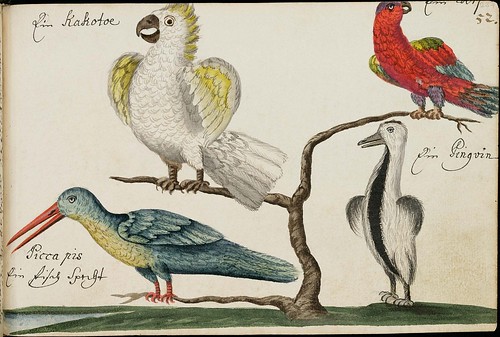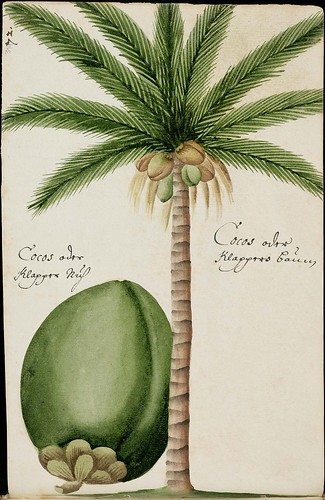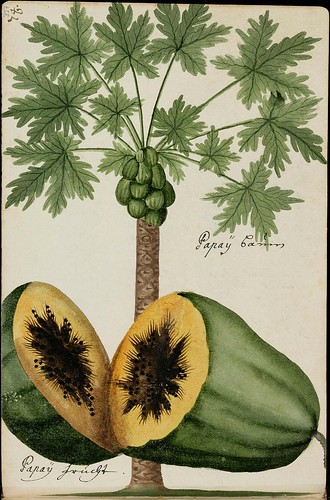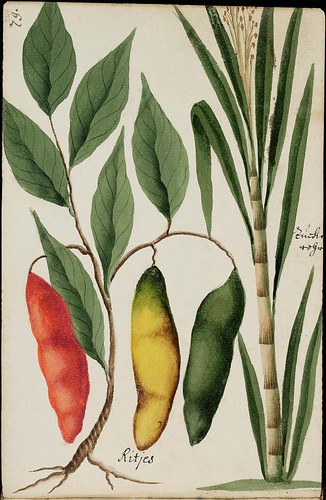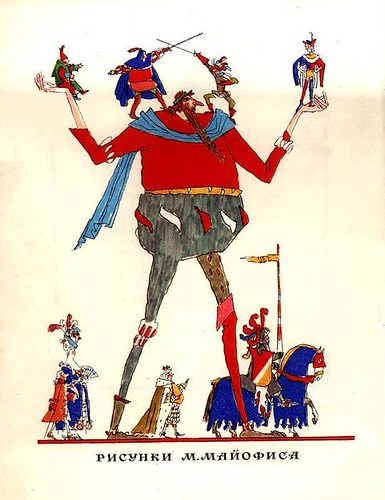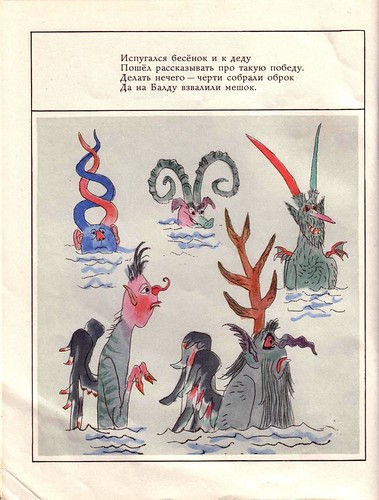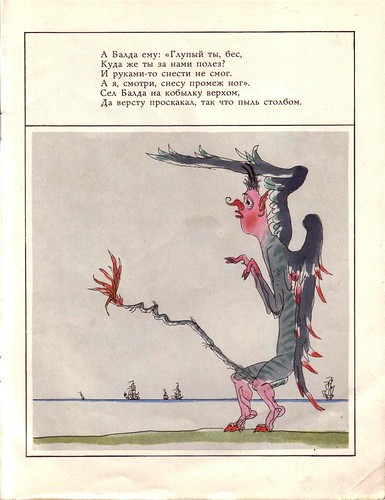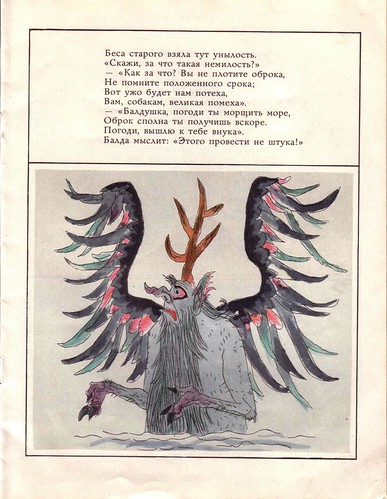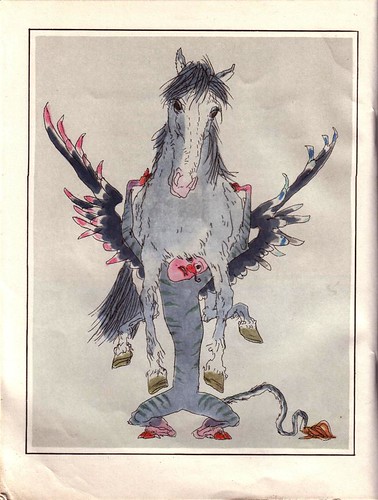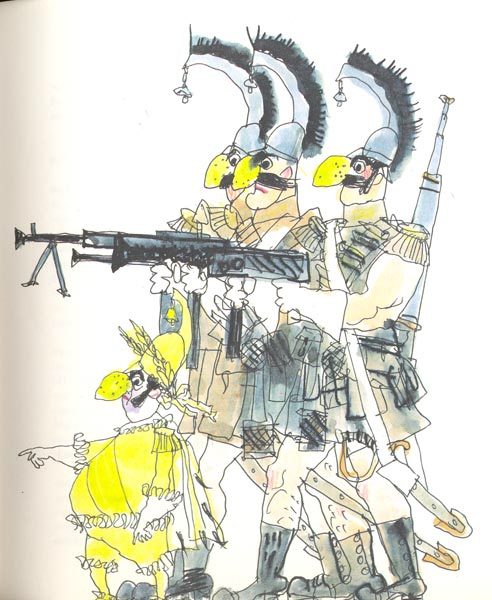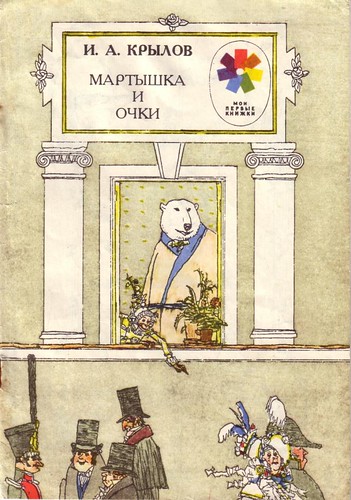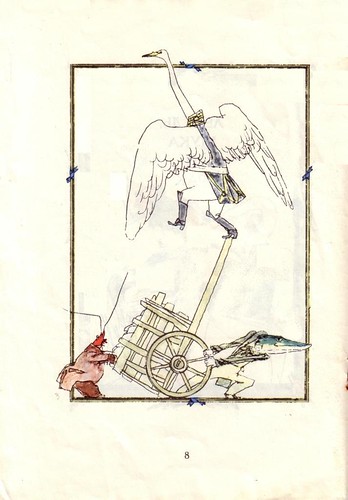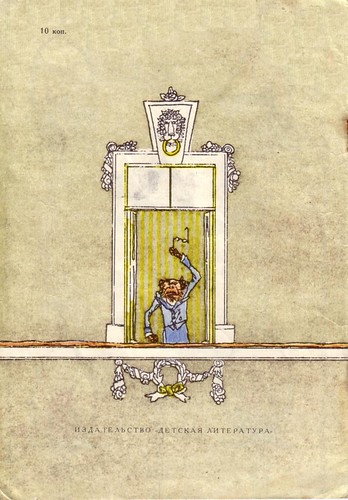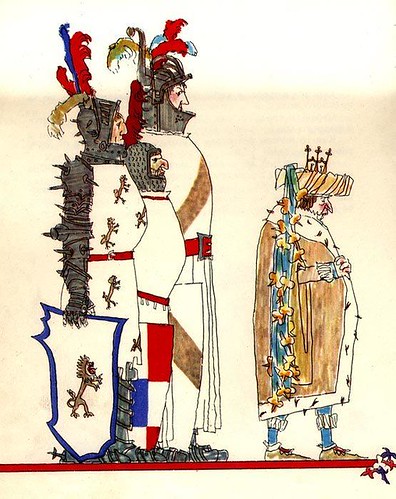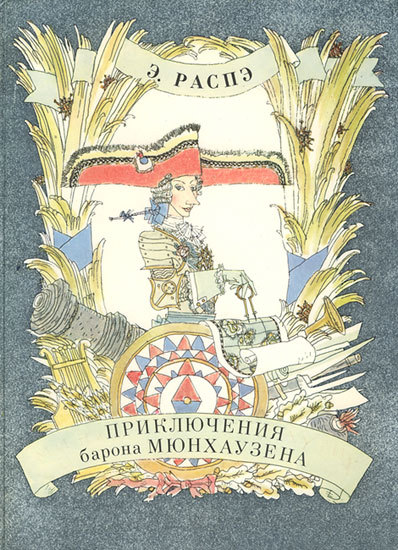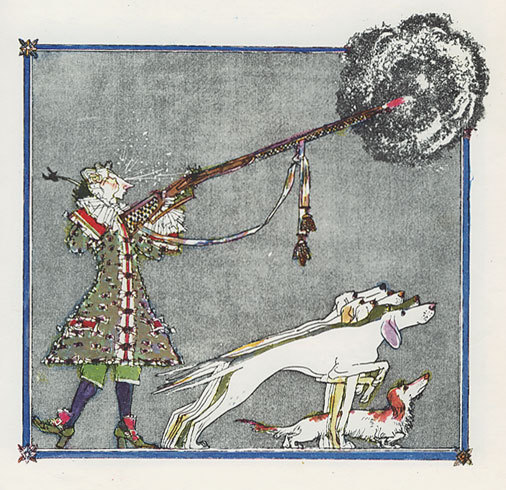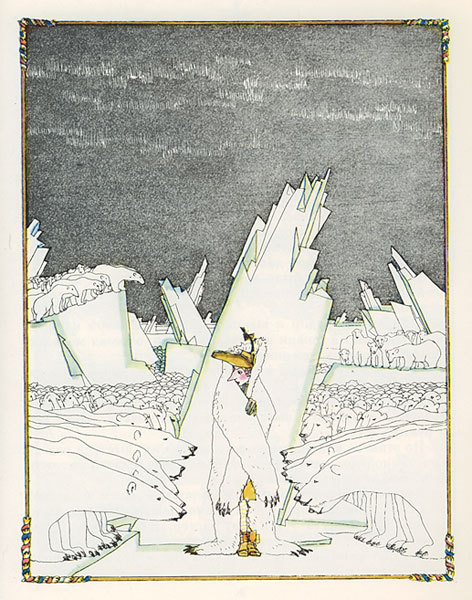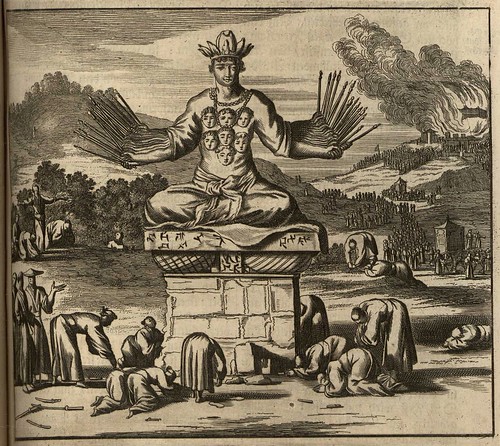
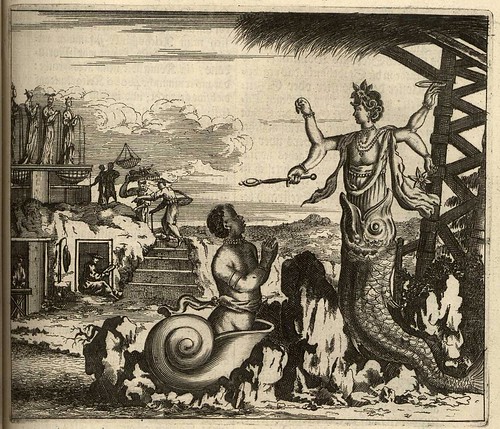

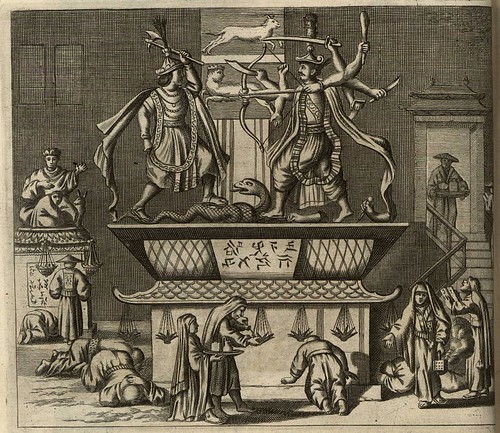

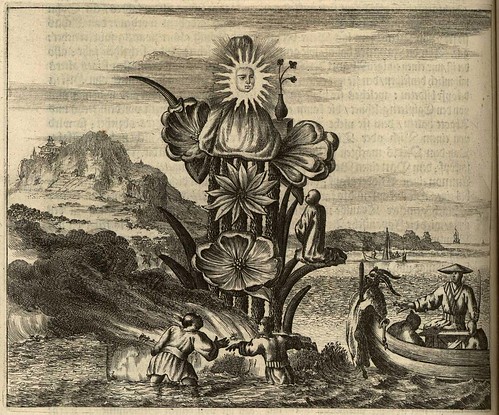
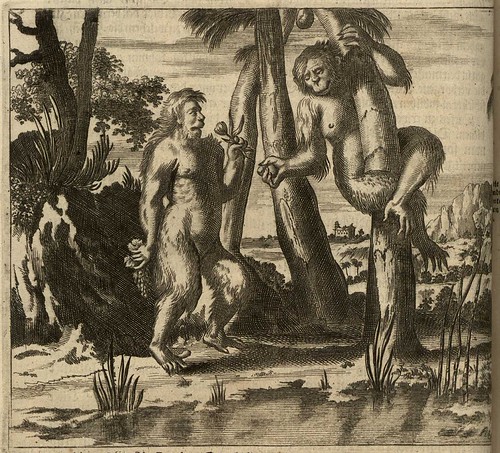
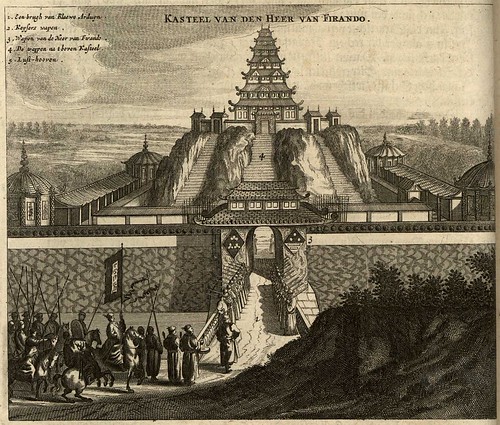
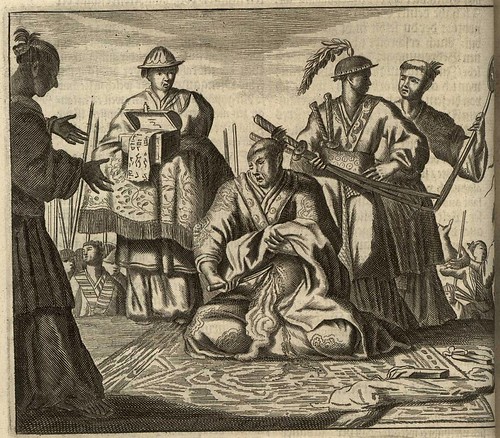
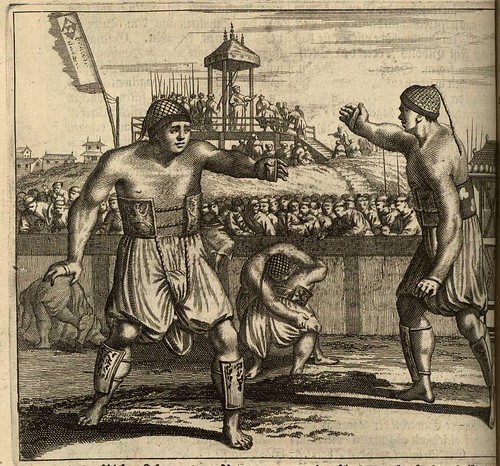
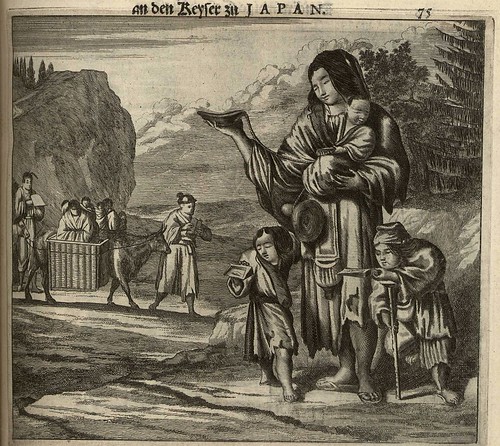

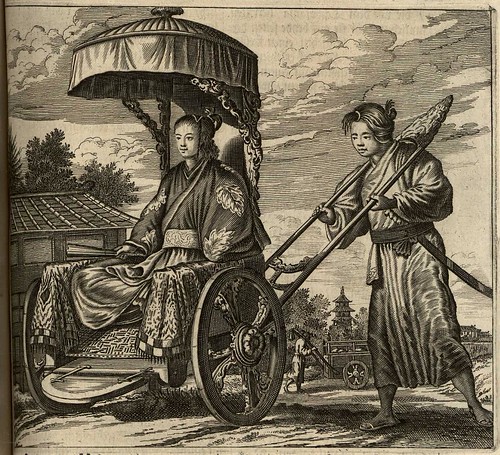
[Addit: see Frog In A Well's
post]
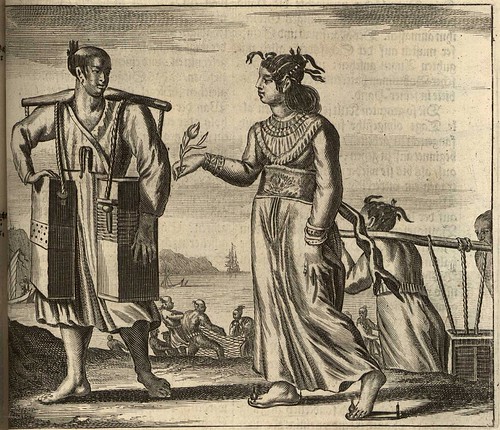
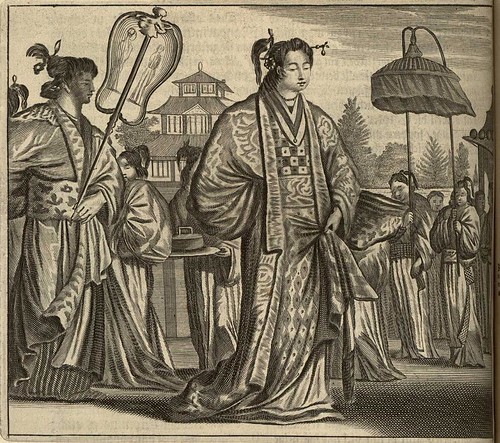
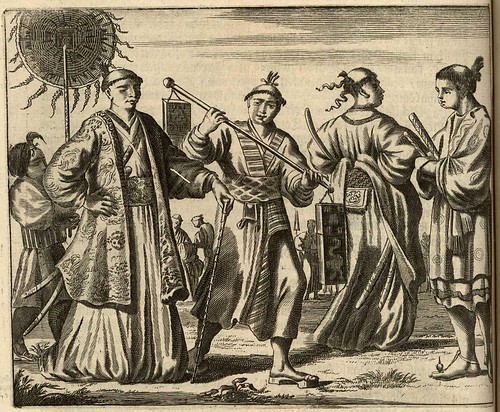
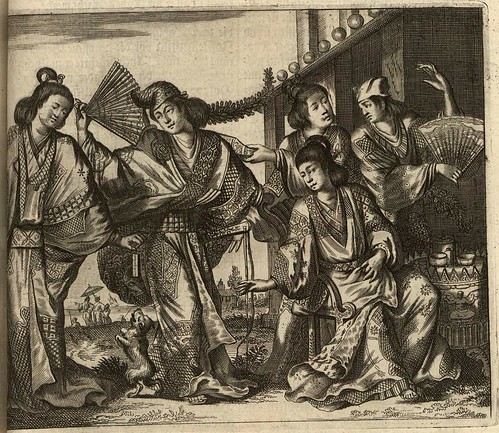
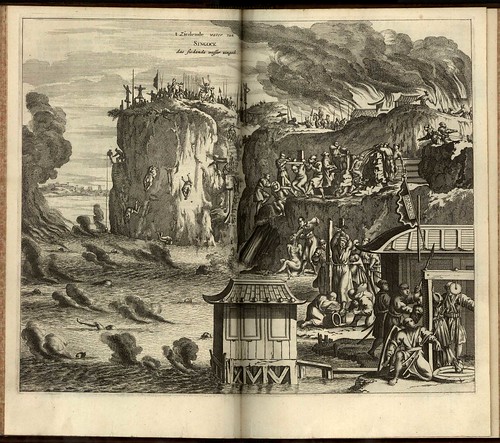
Christian martyrs at Singcock (Zingock)
I presume this is Nagasaki (there were a number of groups of martyrs in Japan).
In
November 2008, 187 Japanese Christian martyrs were Beatified in a step towards Sainthood.
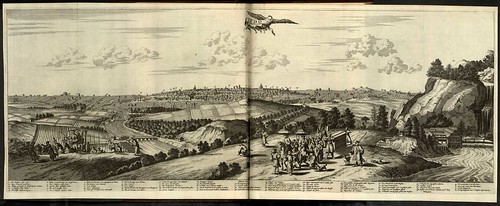
"Early modern travel writing was unquestionably the most diverse genre of literature. Newly discovered ethnographic, navigational, commercial, biological, military and cartographic information from far flung places like Asia was presented to an enthralled European audience. Collections of Jesuit missionary letters and reports gradually gave way to more formal histories and secular accounts from traders, explorers and scholars.
These works were often illustrated with engravings, both factual and fanciful, and many of the accounts and drawings were recirculated through translation, borrowing and reinterpretation. By the late 17th century, travel anthologies became an attractive printing venture for those hoping to profit from the widening interest in exotic cultures during the early days of The Enlightenment." [Source]
The coincidental isolation of Japan during this period, as a result of the Tokegawa Shogunate policy of
sakoku-seisaku ('closed country'), served to limit the amount of information about Japan that flowed through to the west. It follows, in such circumstances, that there should be an even greater demand for literature that purported to give readers any knowledge about such a mysterious country and her people. And publishers were of course strongly motivated to get something -
anything - into print.
One of the most important books that filled the vacuum of knowledge about Japan in the second half of the 17th century was an extensive volume by the Dutch vicar, missionary and church historian, Arnoldus Montanus. He collaborated with the Amsterdam print-shop of Jacob van Meurs to produce
'Denckwürdige Gesandtschafften der Ost-Indischen Geselschaft in den Vereingten Niederländern an unterschiedliche Keyser von Japan' in 1669. That's obviously the German title and the images above come from its second reprint in 1670. The book was very popular and John Ogilby
* pirated an english translation under the title:
'Atlas Japanensis, being Remarkable Addresses by Way of Embassy of the East India Company to the Emperor of Japan Containing a Description of Their Several Territories, Religions, Laws, and Customs, Prodigious Wealth & Georgeous Habits, the Nature of Their Soil, Plants, Beasts, Hills, Rivers & Fountains With the Character of the Ancient & Modern Japanners. Collected Out of Their Several Writings and Journals.', also published in 1670 (it had been released in at least five languages within two years).
Montanus composed his book during a stay at Deshima [
Dejima] Island in Nagasaki Harbour (the only place during the
sakoku where foreigners could disembark, live and trade; operated by the Dutch East India Company {VOC}). The annual embassy expedition to Edo (Tokyo) by VOC representatives to pay their respects to the Shogun had been documented in the 1640s and it was these accounts, held at the VOC offices in Deshima, that provided Montanus with his primary source material. In addition he obtained earlier Portuguese mission records and cherry-picked notes from various Jesuit travel letters and books.
Obviously the first half of the images above -
(orangutans!! Hindu Gods!) - suggest that the book was an altogether fanciful production, but that's only partly true. There are apparent oddities within the text as well, but on the whole, Montanus' work provided the most authentic accounts of Japanese culture available until the restrictions on foreigner travel were relaxed in the 1800s. Jacob van Meurs had lifted - or adapted - some images from Kircher's
'China Illustrata' (among other exotic books), no doubt concluding that profits would be maximized with the inclusion of as many unusual or bizarre engravings as possible. The second half of the images above indicates that reliable visual material had been obtained which, together with the many original maps prepared for the book, accounts for the fact that
'Atlas Japanensis' was a very influential and well received publication.
